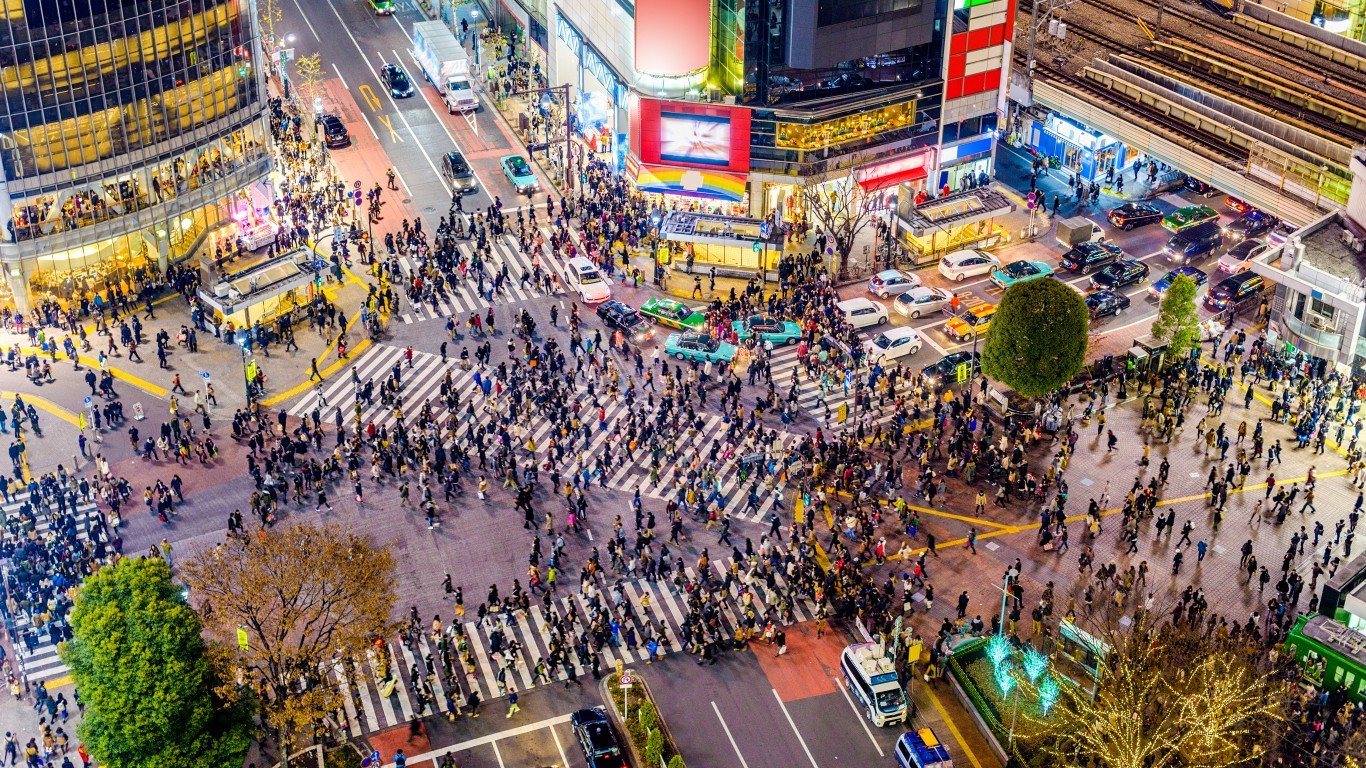

The world is becoming more urban. According to a 2018 report from the United Nations, 68% of the global population is projected to live in urban areas by 2050. While greater density can put residents closer to restaurants, theater, clubs, banks, and grocery stores, and while more people taking mass transit can reduce the carbon footprint, increased density combined with poor planning can lead to such outcomes as traffic congestion and air and noise pollution. Here are the most polluted places on Earth.
Opportunities created by established and emerging industries, the exposure to diverse cultures, and cultural attractions like museums and art galleries all contribute to the growth of cities. This expansion creates challenges such as providing housing, transportation, infrastructure, education, and health care, and with them, putting greater stress on urban dwellers.
24/7 Tempo has compiled a list of the world’s most stressed-out cities. We created an index of eight city- and country-level measures of the population’s health, financial well-being, and happiness, among other indicators of stress to identify the most stressed-out cities.
Click here to see the world’s most stressed-out cities.
Click here to read our methodology.
While these urban meccas have many positive features, the more residents they attract, which can create stressful and tense conditions, making city living difficult. Some of even the most desirable cities have long commutes, pricey monthly transportation passes, and steep housing affordability costs, requiring workers to work long hours to afford to live in these cities.
While these urban meccas have many positive features, the more residents they attract, which can create stressful and tense conditions, making city living difficult. Some of even the most desirable cities have long commutes, pricey monthly transportation passes, and steep housing affordability costs, requiring workers to work long hours to afford to live in these cities.
The U.N. predicts the planet will add 2.5 billion people by 2050, with about 90% of this surge occurring in Africa and Asia. To underscore the worldwide shift toward cities, by 2030, Earth will have 43 megacities — those with more than 10 million residents — and most of these places will be in the developing world. These are the megacities in the world today.
Opportunities created by established and emerging industries, the exposure to diverse cultures, cultural attractions like museums and art galleries, and the overall excitement of urban living all contribute to the growth of cities. This expansion creates challenges such as providing housing, transportation, energy systems, infrastructure, education, and health care for city populations, and with them, putting greater stress on urban dwellers.
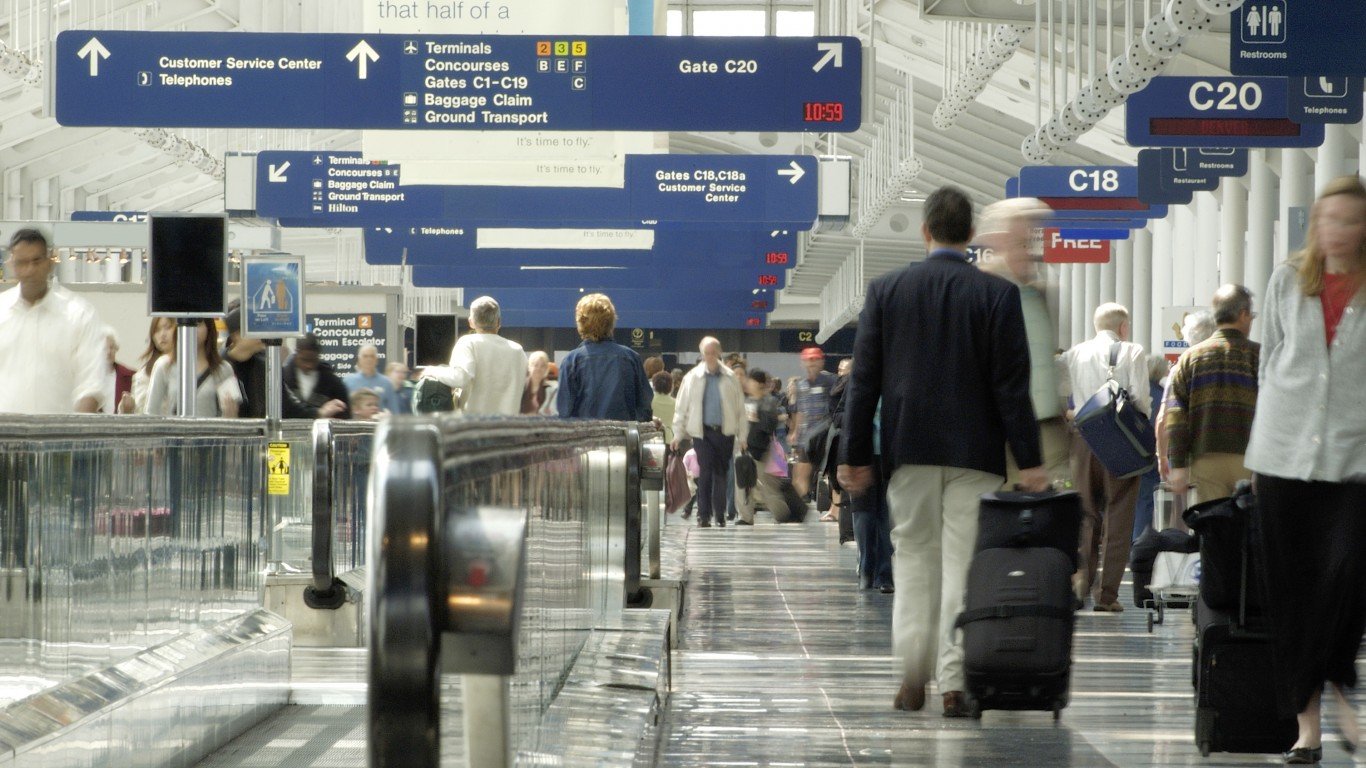
25. Chicago, United States
> Avg. hours worked per week: 41
> Avg. one-way commute time: minutes 42
> Population with mental health disorder: 18.3% (women), 16.3% (men)
> Gallup world poll happiness ranking: 25 out of 186
> Population: 2.7 million
As a large American city, Chicago has world-class universities, a bustling business district, vibrant dining scene, and many professional sports teams. However, Chicagoans work an average of 41 hours a week, the 19th longest of the 190 cities reviewed for this list, and they only get 14 vacation days, less than half of what workers in Paris get.
[in-text-ad]
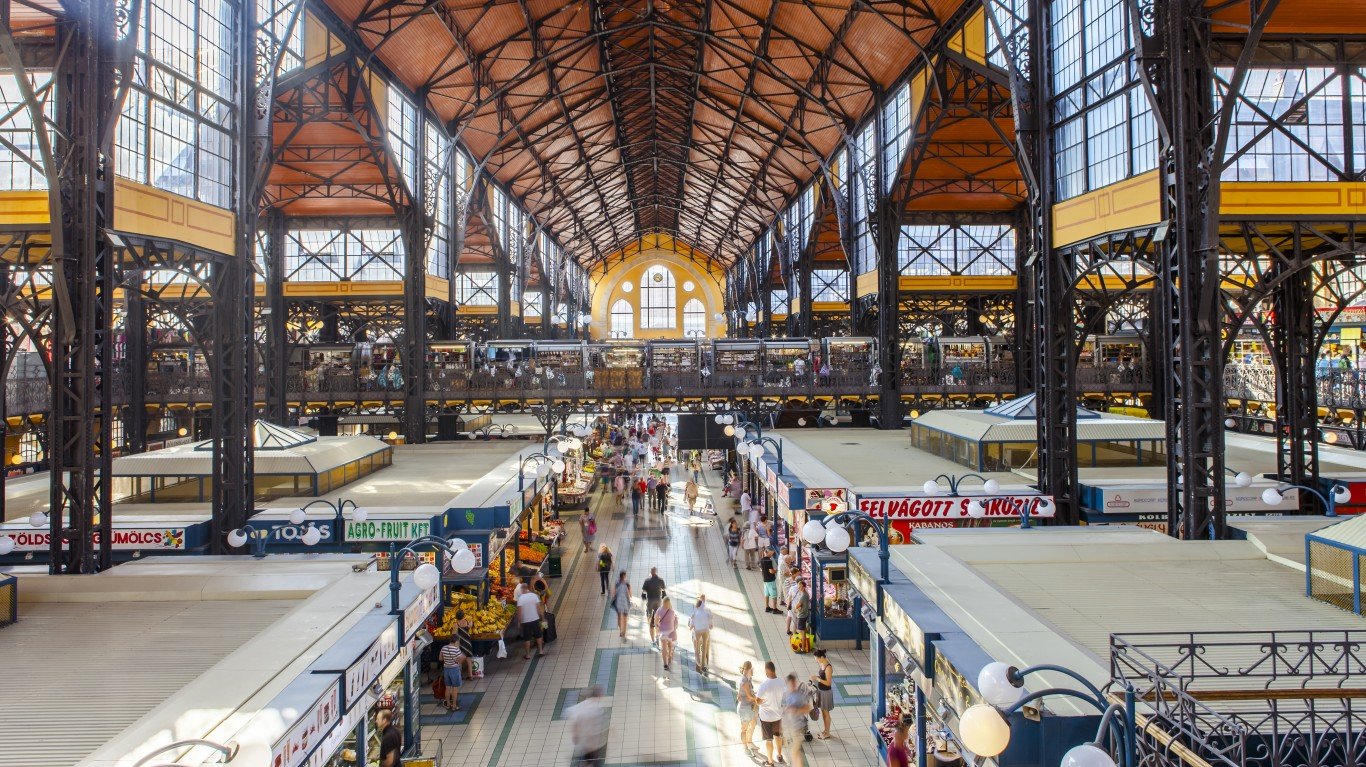
24. Budapest, Hungary
> Avg. hours worked per week: 36
> Avg. one-way commute time: minutes 39
> Population with mental health disorder: 11.5% (women), 11.2% (men)
> Gallup world poll happiness ranking: 103 out of 186
> Population: 1.8 million
Budapest, the capital of Hungary, made the top 25 most stressed out cities in part because of relatively long commutes and a low ranking in the 2020 Gallup World Happiness Report. It takes about 39 minutes to just get to work, which is only about 15 minutes less than the cities with the worst commutes. The Heart of Europe, as Budapest is sometimes called, is the fifth most stressed-out European city on the list. Budapest placed 103rd out of 186 cities in the latest Gallup well-being ranking.
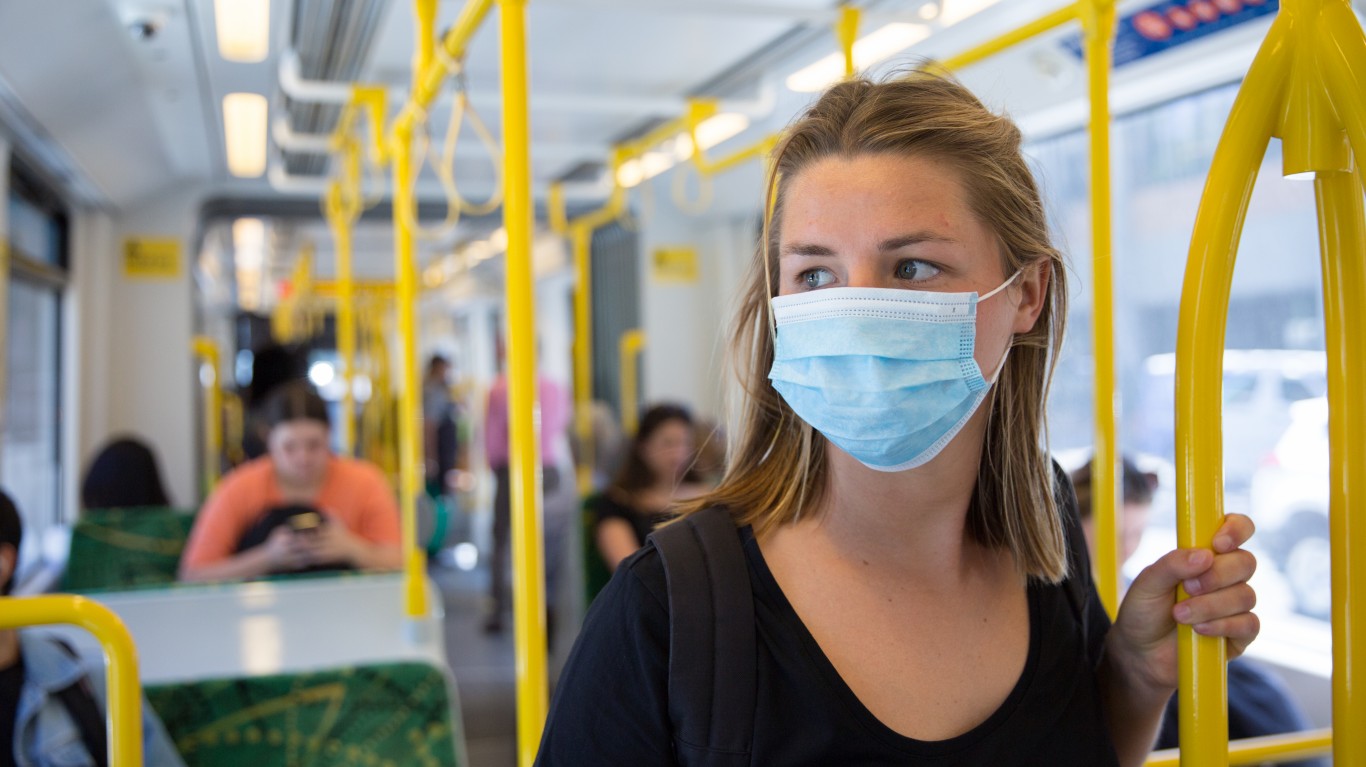
23. Melbourne, Australia
> Avg. hours worked per week: N/A
> Avg. one-way commute time: minutes 41
> Population with mental health disorder: 19.2% (women), 17.5% (men)
> Gallup world poll happiness ranking: 14 out of 186
> Population: 5.0 million
Like fellow Australian city Sydney, Melbourne annually ranks among the most livable cities in the world in surveys such as those conducted by the Economist Intelligence Unit. That doesn’t mean there’s a lack of stress in Melbourne, though. The cost of housing in the city is about 9.5 times higher than the city’s median household income, the fourth highest affordability ratio of any of the 560-plus cities reviewed on the list. The average one-way commute time of 41 minutes is one of the higher travel times of any of the more than 560 cities on the list.
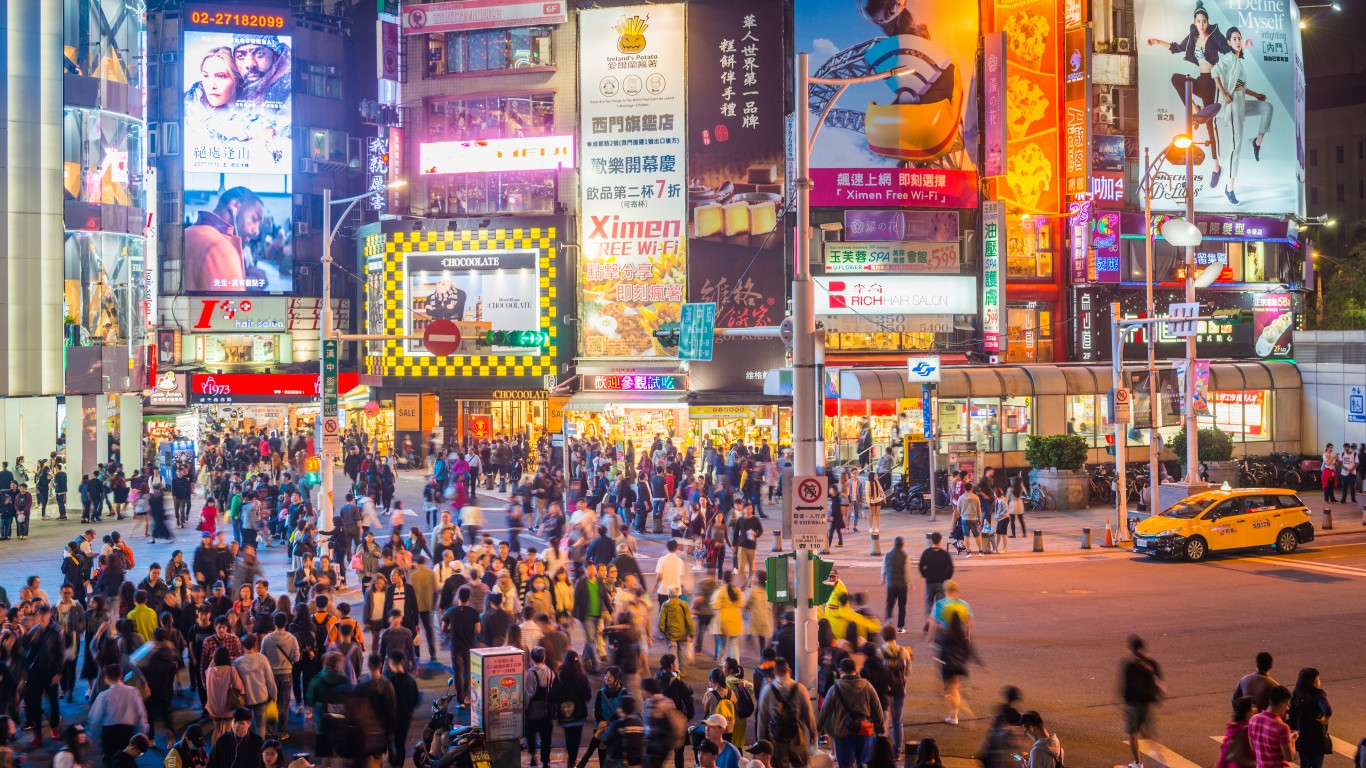
22. Taipei, Taiwan
> Avg. hours worked per week: 42
> Avg. one-way commute time: minutes 34
> Population with mental health disorder: 11.3% (women), 11.6% (men)
> Gallup world poll happiness ranking: 47 out of 186
> Population: 2.7 million
A combination of relatively long commute and long work days contribute to Taipei’s ranking among the world’s most stressed-out cities. Local workers take on average 34 minutes to get to work, which ranks 134th of the 560 cities reviewed. And people work about 42 hours a week, which is more than all but 15 cities of the 190 cities reviewed.
In addition to working long hours, not taking much time off may also contribute to high stress levels. The average number of vacation days a year workers in Taipei take is 11, only five days more than the city with the fewest vacation days — Lagos, Nigeria.
[in-text-ad-2]

21. Tokyo, Japan
> Avg. hours worked per week: 38
> Avg. one-way commute time: minutes 40
> Population with mental health disorder: 12.1% (women), 12.6% (men)
> Gallup world poll happiness ranking: 79 out of 186
> Population: 37.4 million
Tokyo has long had a reputation for its brutal office culture, with some young people working themselves to death — not an unusual phenomenon called karoshi. The commute time in Tokyo is also among the longer ones at about 40 minutes one way. And though, officially, the average employee has about 18 days vacation time, few people actually take time off because it is often frowned upon.
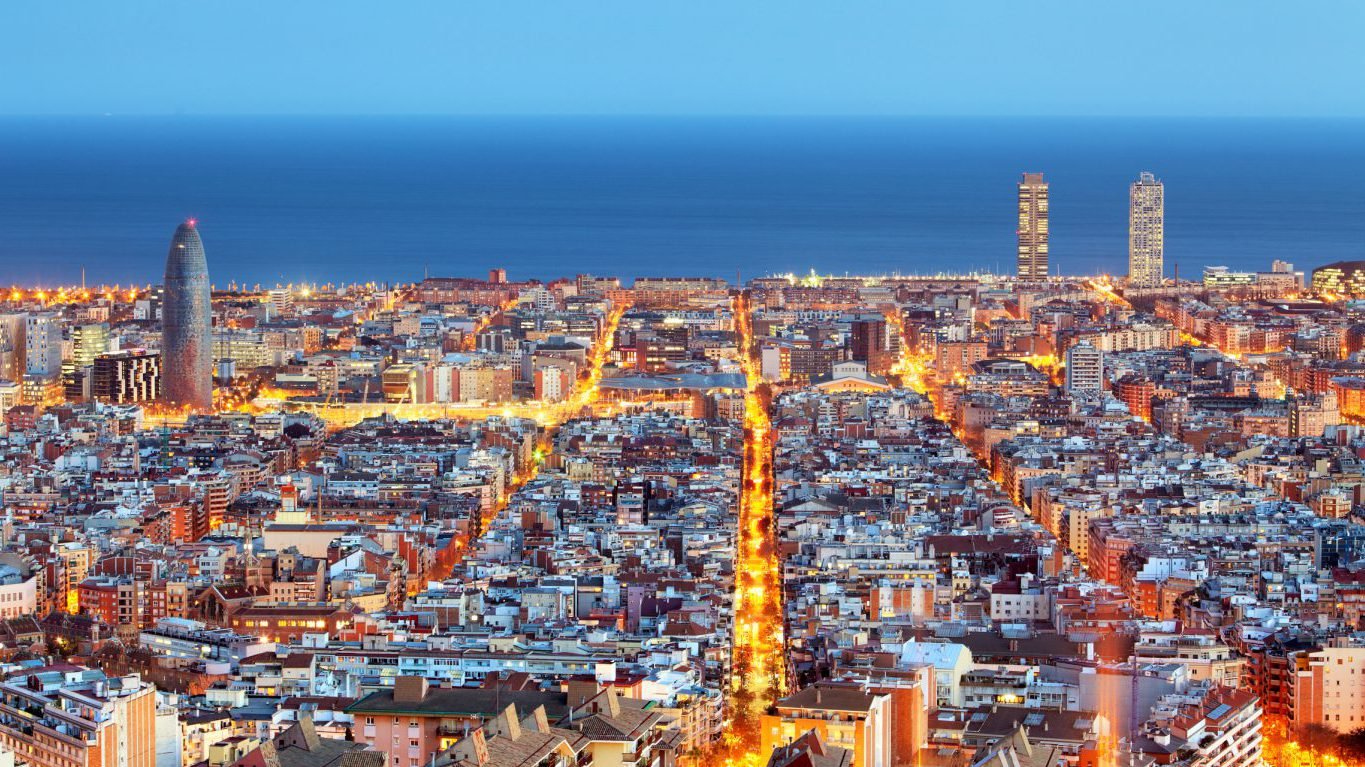
20. Barcelona, Spain
> Avg. hours worked per week: 34
> Avg. one-way commute time: minutes 30
> Population with mental health disorder: 17.8% (women), 14.5% (men)
> Gallup world poll happiness ranking: 55 out of 186
> Population: 5.6 million
Barcelona has become a major tourist destination, and the influx of visitors has become a source of stress for residents who feel they are being overwhelmed by tourists. The website Barcelona Metropolis reports that from 1990 to 2018, the demand for hotel accommodation has increased from 1.7 million to 9.1 million. Another source of stress is the impact of COVID-19 in Barcelona, which experienced a surge in cases in late July.
Spain’s unemployment rate of 14.1% is the 16th highest of countries whose cities were considered for the list. Workers in Barcelona alleviate stress by using 32 vacation days, the fourth most of any city of the more than 560 cities on the list, and a sharp contrast with workers in Miami, who only get 12 days vacation.
[in-text-ad]
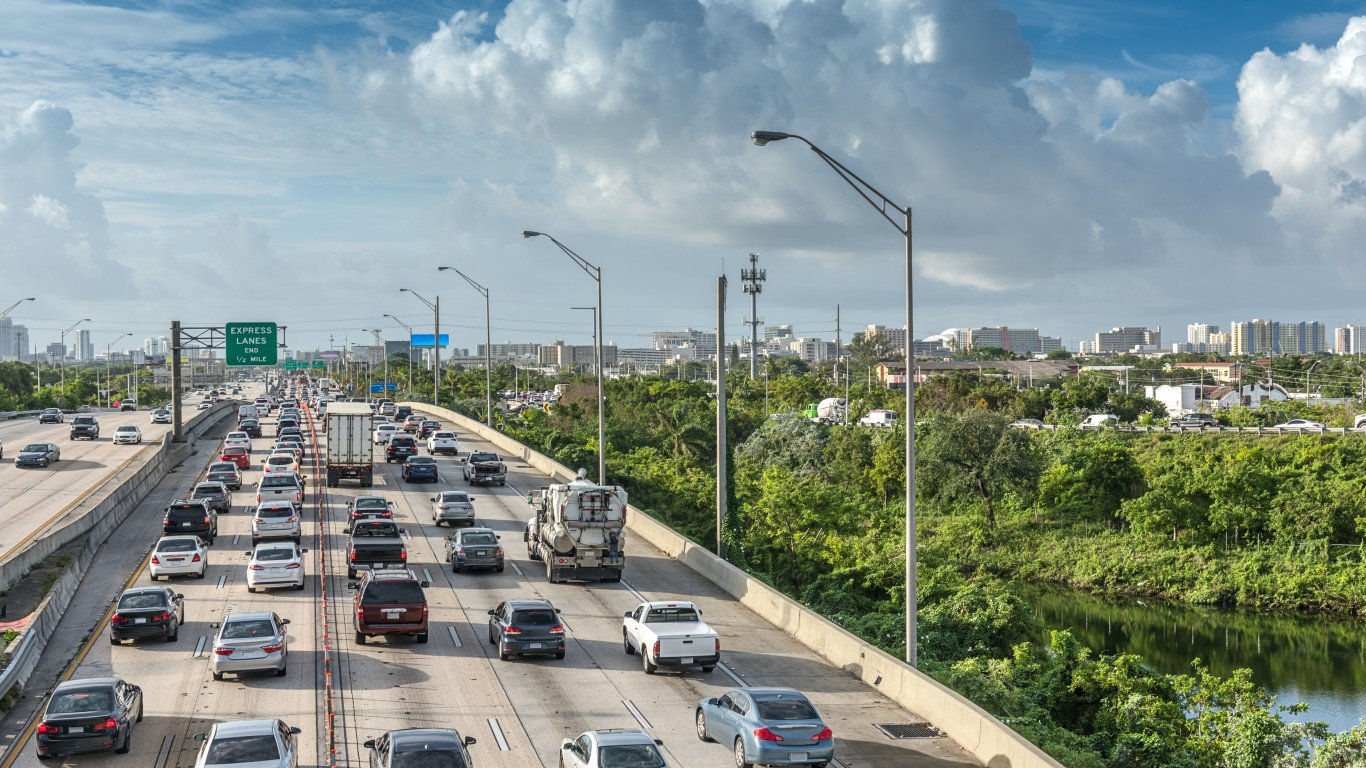
19. Miami, United States
> Avg. hours worked per week: 39
> Avg. one-way commute time: minutes 43
> Population with mental health disorder: 18.3% (women), 16.3% (men)
> Gallup world poll happiness ranking: 27 out of 186
> Population: 471,000
Miami’s exuberant nightlife, iconic hotels and beaches, and vibrant dining scene make it one of the most visited cities in the United States. But commuting can be difficult, with an average one-way travel time of 43 minutes, one of the longer commutes for the 560-plus cities reviewed for this list. Workers get little relief from their labor, with just 12 vacation days a year, compared with workers in Istanbul who get almost 24 vacation days. The cost of housing in Miami is about 5.4 times higher than the city’s median household income, higher than other U.S. cities such as Chicago, Boston, and Atlanta.
Adding to the city’s stress, Miami also emerged as one of the hotspots for the spread of COVID-19 in July.
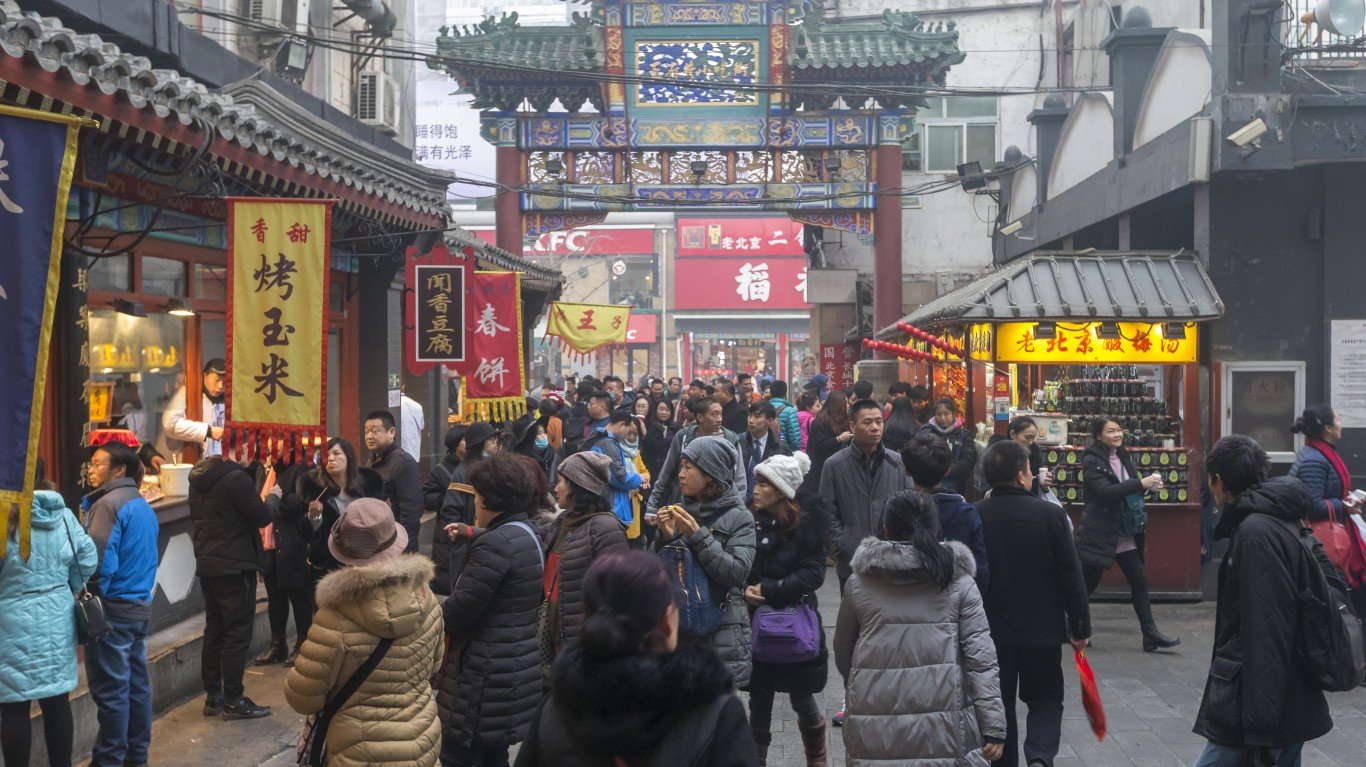
18. Beijing, China
> Avg. hours worked per week: 40
> Avg. one-way commute time: minutes 46
> Population with mental health disorder: 11.3% (women), 11.4% (men)
> Gallup world poll happiness ranking: 134 out of 186
> Population: 20.5 million
A long commute, long work weeks, and a low happiness ranking, according to Gallup all contribute to Beijing’s high placement among the world’s most stressed-out cities. It takes an average 46 minutes for a person to get to work, the 31st highest time of the 562 cities reviewed. The Chinese capital is ranked 134th out of 186 countries when it comes to happiness, according to Gallup.
What may also contribute to the high levels of stress residents are struggling with is the lack of vacation time. People take about nine days off a year, which is among the lowest vacation days of all 560+ cities reviewed.
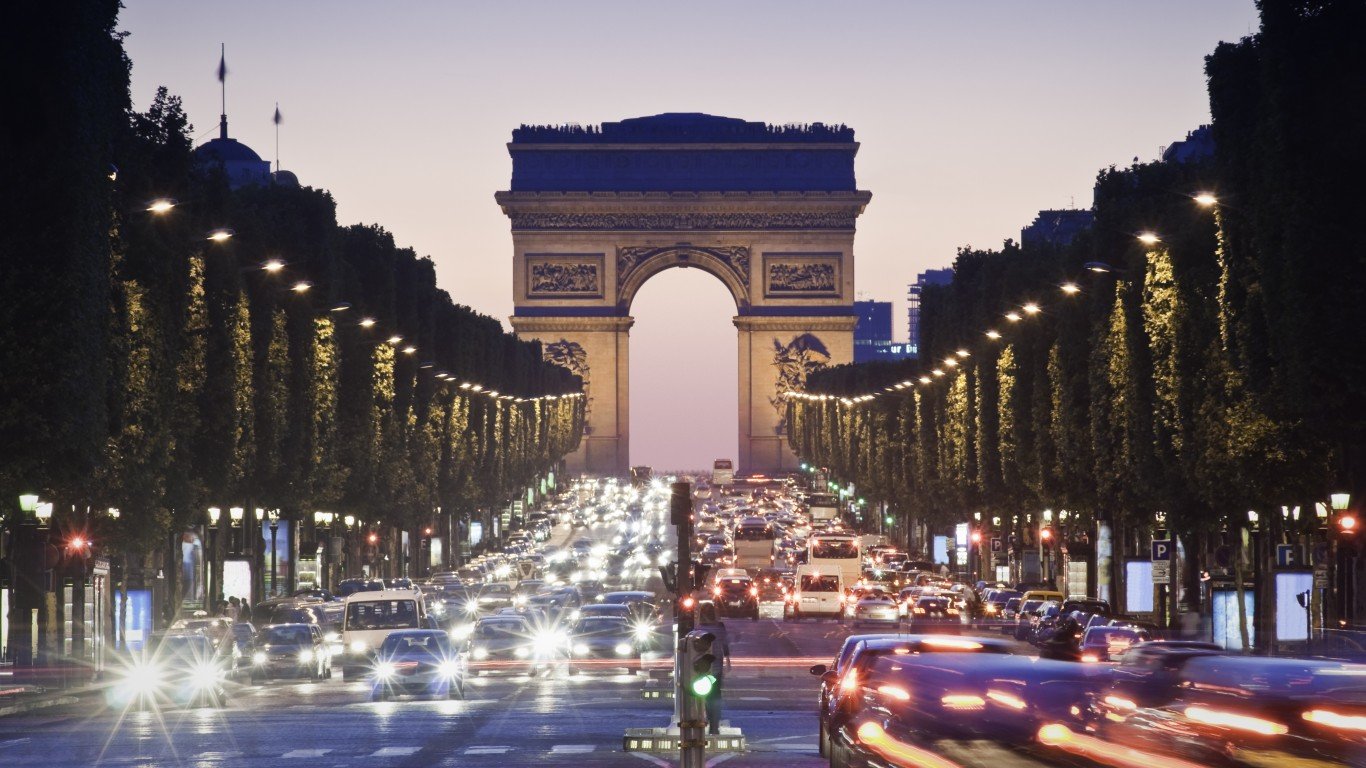
17. Paris, France
> Avg. hours worked per week: 32
> Avg. one-way commute time: minutes 41
> Population with mental health disorder: 18.3% (women), 14.3% (men)
> Gallup world poll happiness ranking: 43 out of 186
> Population: 11.0 million
Paris may be one of the great tourist destinations in the world, drawing more than 30 million visitors annually, but the city ranks among world’s most stressed-out cities because of long commute time and the high cost of living. A survey by the online French recruitment company Cadremploi found that 84% of middle managers or executives want to leave the French capital for less-stressful environs.
What may help alleviate the stress is the number of vacation days, which at 30 is nearly three times the number of vacation days for workers in Los Angeles.
[in-text-ad-2]
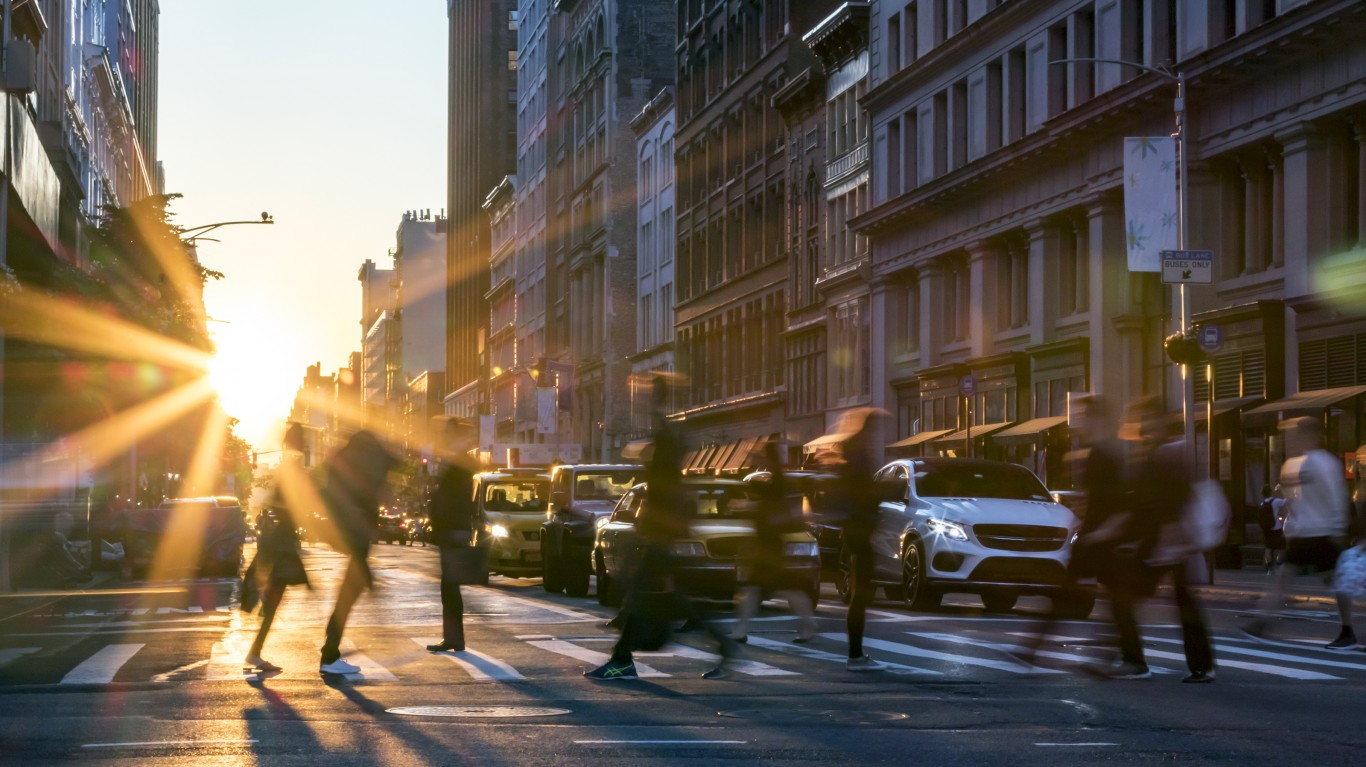
16. New York City, United States
> Avg. hours worked per week: 39
> Avg. one-way commute time: minutes 44
> Population with mental health disorder: 18.3% (women), 16.3% (men)
> Gallup world poll happiness ranking: 30 out of 186
> Population: 8.3 million
New York City is America’s financial, media, and fashion capital. It is also one of the most diverse cities in the world and a magnet for ambitious people. Even in its best of times, the stress level in NYC is intense because of the cost of living and commuting hassle. It takes 44 minutes to commute one-way to work, one of the higher travel times of the 560-plus cities reviewed for the list. The city is also one of the least affordable in the world, with a median house price costing as much as 5.4 times the median household income.
With the onset of COVID-19, soaring unemployment, and civil unrest, stress levels are climbing in New York City and many people are moving out.
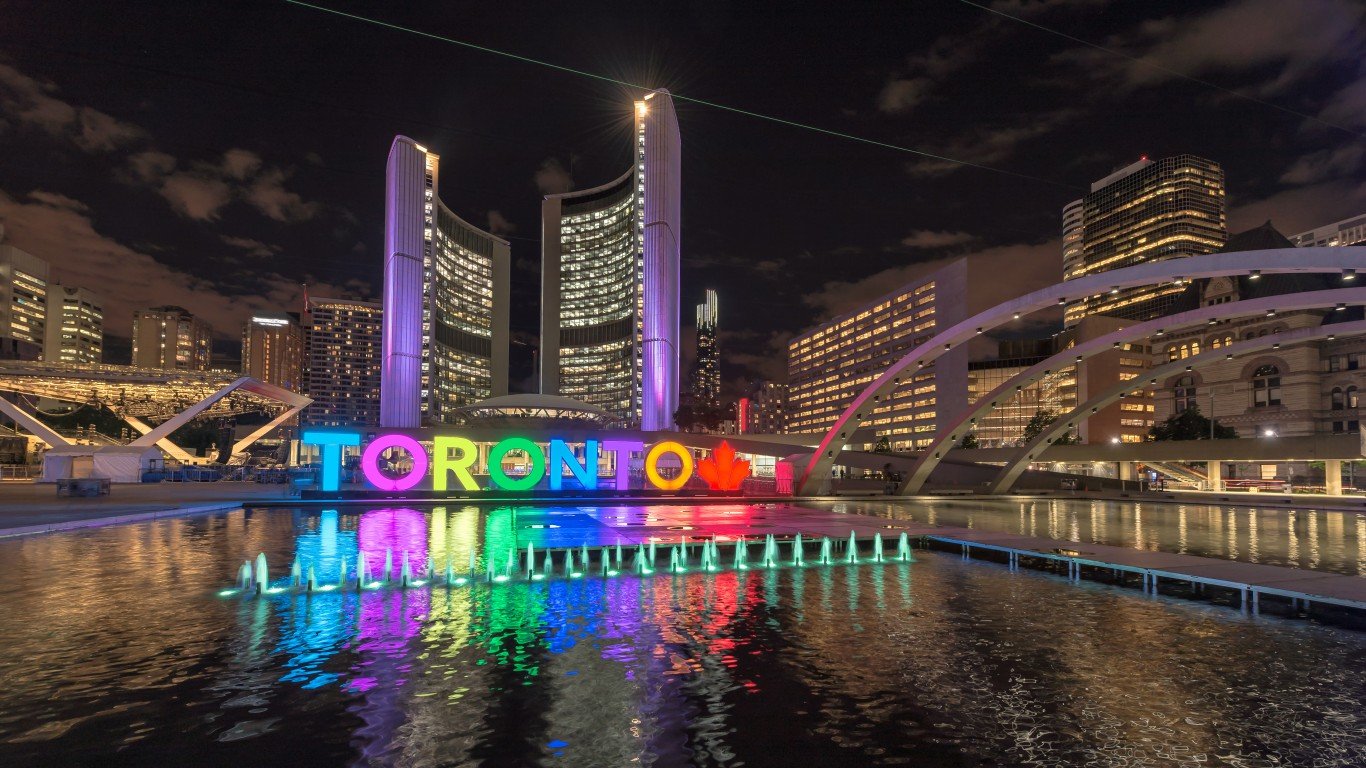
15. Toronto, Canada
> Avg. hours worked per week: 37
> Avg. one-way commute time: minutes 45
> Population with mental health disorder: 15.7% (women), 15.3% (men)
> Gallup world poll happiness ranking: 13 out of 186
> Population: 6.2 million
Toronto enjoys a reputation as being a good place to live and work, and Gallup ranks it as the 13th happiest city out of 186 cities. Even so, according to a report released by the Ontario Trillium Foundation, a provincial government agency, about 35% of Toronto residents struggle with the cost of housing. The cost of housing in Toronto is 8.6 times higher than the city’s median household income, the seventh highest of any city reviewed for the list. Commuting time is also a source of stress, with an average one-way travel time of 45 minutes, one of the longer travel times of any of the more than 560 cities reviewed for the list.
[in-text-ad]
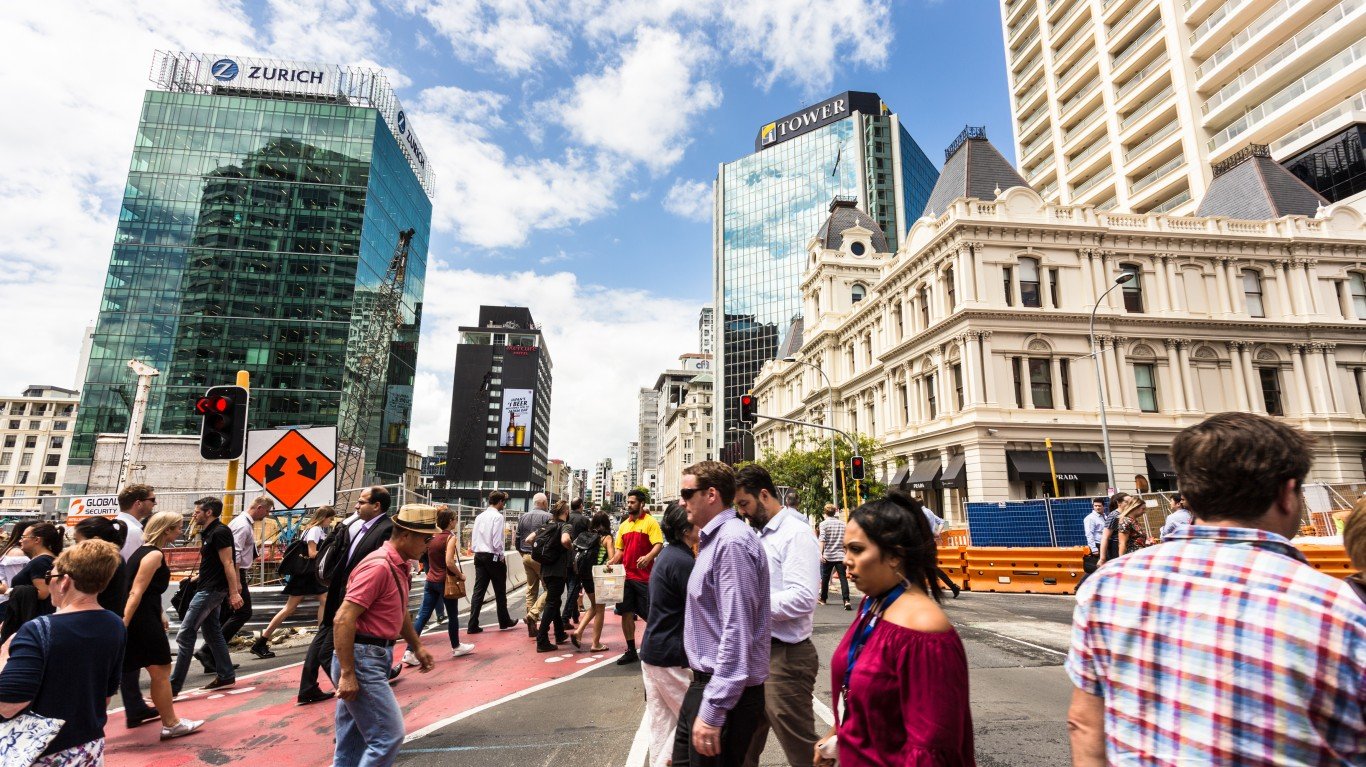
14. Auckland, New Zealand
> Avg. hours worked per week: 37
> Avg. one-way commute time: minutes 37
> Population with mental health disorder: 20.1% (women), 17.2% (men)
> Gallup world poll happiness ranking: 16 out of 186
> Population: 1.6 million
Auckland is New Zealand’s most populous city with more than 401,000 residents and 1.6 million in its metropolitan area, representing about one-third of New Zealand’s total population. Auckland routinely ranks among the world’s most livable cities in quality of living surveys, getting kudos for stable political and social environment and its medical and health services. But the cost of housing in the city is high, with a median house costing 8.6 times the median household income in the city, the seventh highest of any city reviewed for the list.
A survey conducted last year by healthcare organization Southern Cross and business advocacy group BusinessNZ found increased workloads and personal relationships were raising stress levels among Auckland residents and other New Zealanders.
13. Bogota, Colombia
> Avg. hours worked per week: 45
> Avg. one-way commute time: minutes 51
> Population with mental health disorder: 9.6% (women), 10.4% (men)
> Gallup world poll happiness ranking: 45 out of 186
> Population: 11.0 million
Having one of the longest commutes in the world, as well as some of the longest work weeks, can make life in Colombia’s capital very stressful. It takes about 51 minutes in the city of 11 million people to get to work — or almost 10 hours a week spent in traffic — the 21st highest commute among the 560+ cities reviewed.
In addition to spending much time going to work, Bogota residents stay at work long, too. The average work week is 45 hours, the fifth longest among the cities reviewed.
Though Bogota is not as dangerous as it was quarter of a century ago — the homicide rate is now the lowest it has been in 40 years — street crime is rampant.

12. Seoul, South Korea
> Avg. hours worked per week: 44
> Avg. one-way commute time: minutes 42
> Population with mental health disorder: 12.6% (women), 11.1% (men)
> Gallup world poll happiness ranking: 83 out of 186
> Population: 10.0 million
Seoul has become one of the most dynamic business centers in the world, and its metropolitan area is one of the most populous. For the city’s residents, however, there is no escaping the fact that the South Korean capital is just 35 miles from the border with North Korea, one of the tensest borders in the world.
Another source of stress is the length of work week, which at 44 hours is the seventh longest of the more than 190 cities reviewed for this list. According to a New York Times story in 2018, South Korean police say pressure from too much work is a factor in more than 500 suicides a year. Recognizing this concern, the nation passed a law that caps the work week for some employees at 52 hours.
[in-text-ad-2]
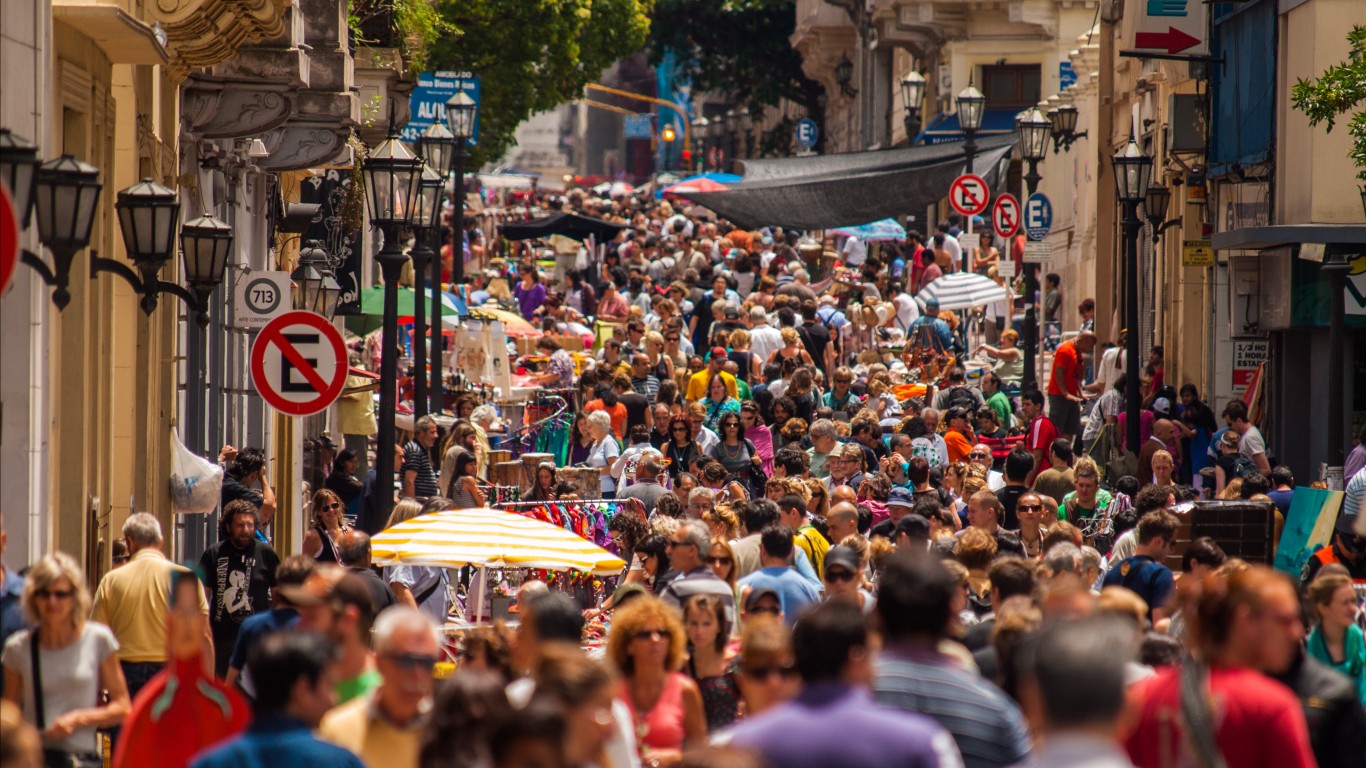
11. Buenos Aires, Argentina
> Avg. hours worked per week: 34
> Avg. one-way commute time: minutes 48
> Population with mental health disorder: 17.6% (women), 13.7% (men)
> Gallup world poll happiness ranking: 57 out of 186
> Population: 15.1 million
Buenos Aires, founded in the early 16th century, is the capital and largest city of Argentina. Though the work week is only 34 hours long, getting to work is a problem. It takes 48 minutes to get to one’s job, one of the longer commutes of the 560-plus cities reviewed for the list. Argentina has an unemployment rate of nearly 10%, and the national poverty rate stands at 32%, both higher than most of the countries whose cities were considered for this list.
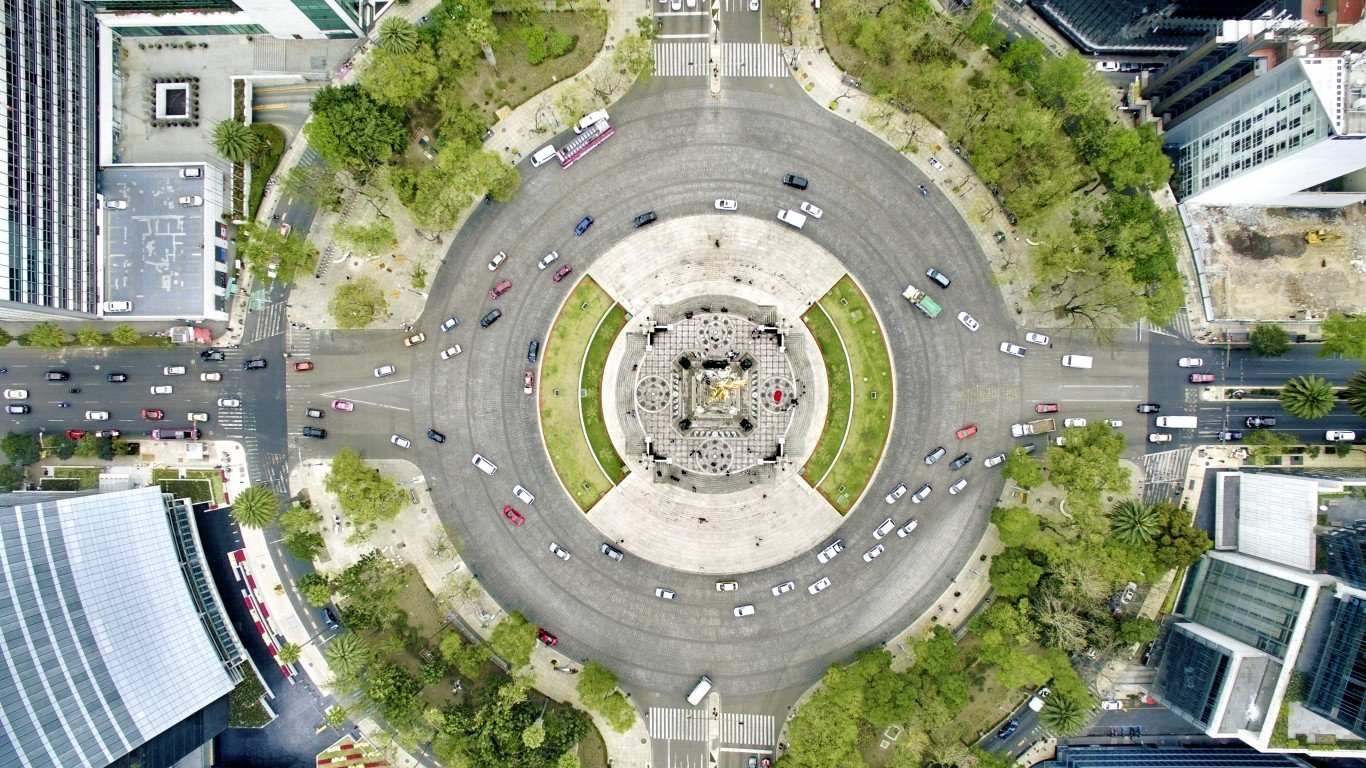
10. Mexico City, Mexico
> Avg. hours worked per week: 50
> Avg. one-way commute time: minutes 52
> Population with mental health disorder: 11.3% (women), 10.4% (men)
> Gallup world poll happiness ranking: 38 out of 186
> Population: 21.8 million
Mexico City ranks among the most stressed-out cities in the world due to several factors, including very long commutes and long working days. Residents need more than 50 minutes to get to work, the 18th longest commute among the 560+ cities reviewed. Also, the average employee works about 50 hours a week, among the longest work weeks of the more than 190 cities reviewed. Residents of Mexico City don’t take a lot of vacation time. People have just 19 days of vacation time a year, the fewest vacation days of all but 19 of the 561 cities reviewed.
In addition to work-related stress, poverty level is high in Mexico City, with a large share of the capital’s population living in slums. The city is home to Neza-Chalco-Itza, the world’s largest slum with over 4 million people living in it.
[in-text-ad]
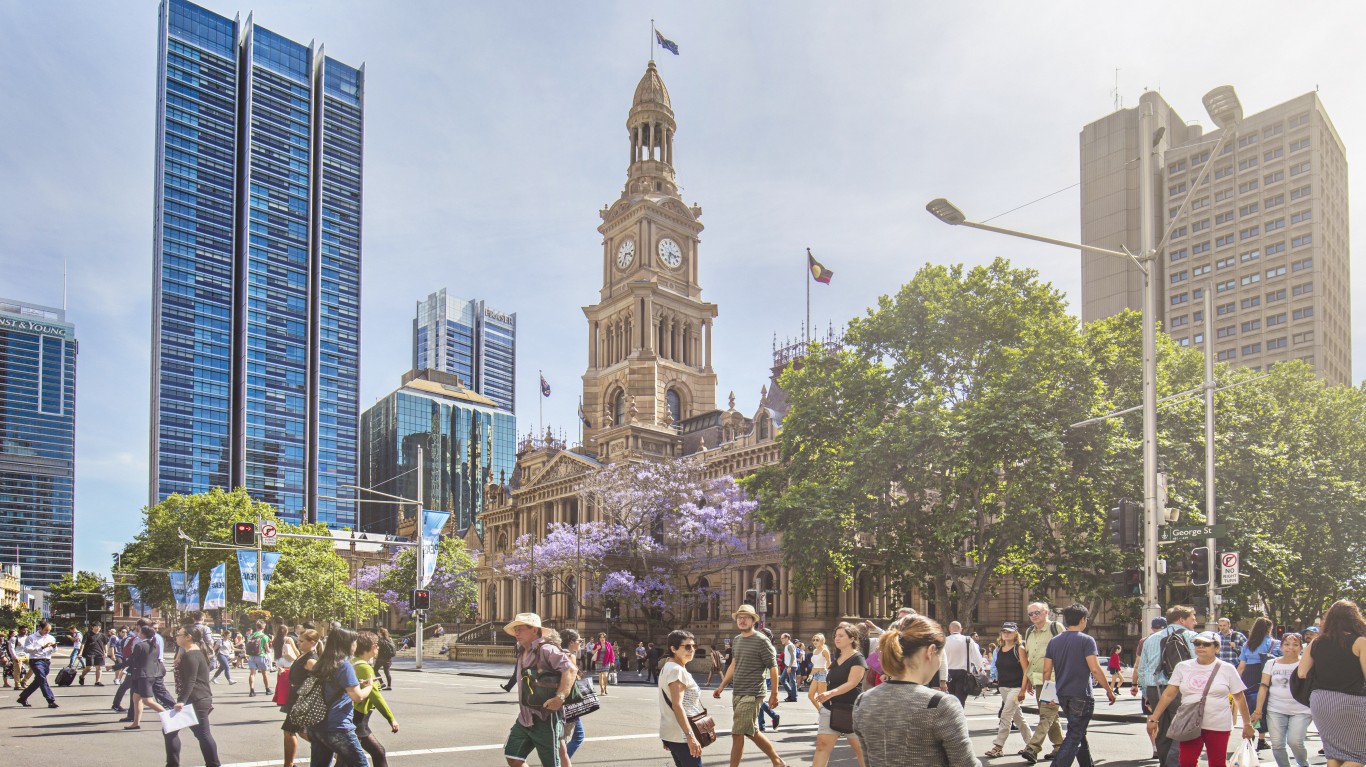
9. Sydney, Australia
> Avg. hours worked per week: 38
> Avg. one-way commute time: minutes 43
> Population with mental health disorder: 19.2% (women), 17.5% (men)
> Gallup world poll happiness ranking: 110 out of 186
> Population: 4.9 million
Sydney regularly ranks among the happiest cities in the world by Gallup and most livable cities in the world by the Economist Intelligence Unit in their annual rankings, but life is still stressful in the Australian metropolis. The cost of housing in Sydney is about 11 times the city’s median household income, the third highest of any of the 561 cities reviewed for the list. The average one-way commute time is 43 minutes, one of the longer travel times among the 561 cities reviewed for the list.
Another stressful factor is the cost of a monthly transportation pass, which is the second highest of 492 cities in the world surveyed by Numbeo, an Internet database that compares the cost of living around the world.
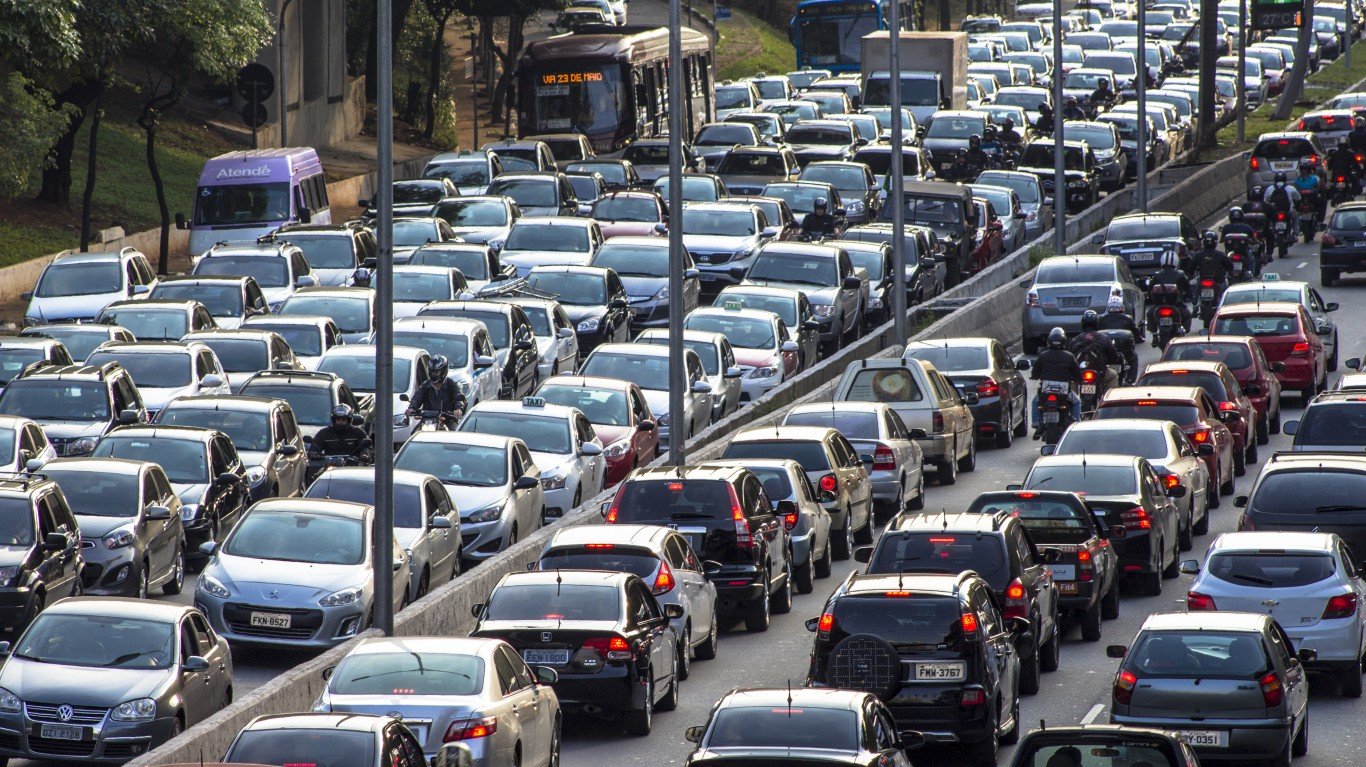
8. São Paulo, Brazil
> Avg. hours worked per week: 36
> Avg. one-way commute time: minutes 51
> Population with mental health disorder: 15.8% (women), 13.1% (men)
> Gallup world poll happiness ranking: 53 out of 186
> Population: 22.0 million
São Paulo is the largest city in Brazil with more than 10 million people and a metropolitan area of 22 million. It is also one of 23 cities on this list with an average one-way commute of more than 50 minutes, one of the longer commutes among the 560-plus cities reviewed for the list. Workers can take comfort in the fact that they have 28 vacation days during the year, compared with 15.2 vacation days for New York workers.
Lack of water caused by recent droughts has been compounded by alleged mismanagement of water resources. Water is crucial to the nation’s economy because 50% of Brazil’s electrical energy is derived from hydropower. Although violent crime has fallen in São Paulo — the homicide rate fell to six per 100,000 by 2017 from 52 per 100,000 in 1999 — it remains a source of stress. Income inequality is widening, according to a study from the research group Getulio Vargas Foundation.
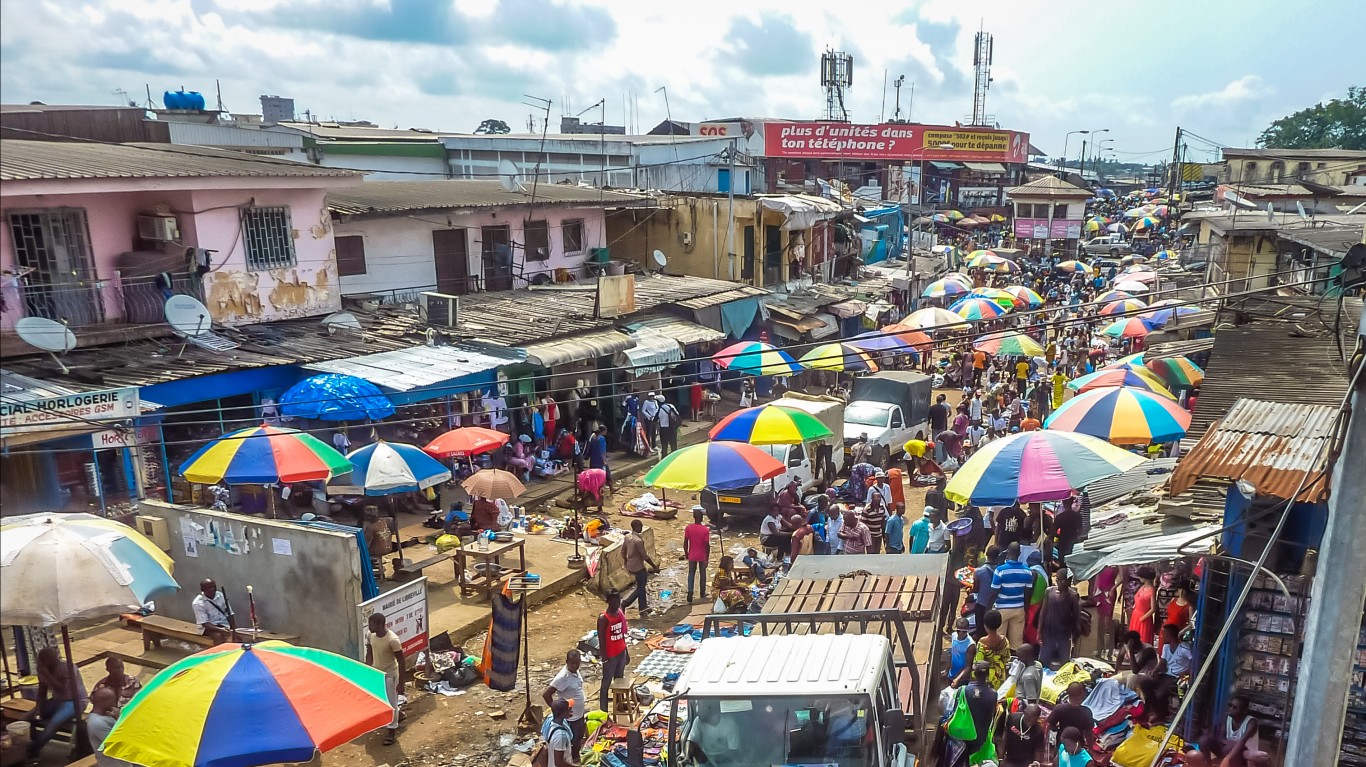
7. Nairobi, Kenya
> Avg. hours worked per week: 44
> Avg. one-way commute time: minutes 57
> Population with mental health disorder: 12.7% (women), 11.9% (men)
> Gallup world poll happiness ranking: 139 out of 186
> Population: 4.7 million
Nairobi, Kenya’s capital and largest city, is known for its Nairobi National Park, famed for its wildlife preserves. Nairobi, an emerging tech hub, is becoming one of Africa’s largest cities, and the U.N. predicts Nairobi will become a megacity — cities with a population of 10 million or more — by 2040.
With that growth comes traffic problems. The city has the eighth-longest average one-way commute, at 57 minutes, of any of the more than 560 cities reviewed on the list, and its work week of 44 hours is the ninth longest of the 190 cities reviewed for the list. Crimes such as home invasions, armed carjackings, and kidnappings are sources of stress in Nairobi.
[in-text-ad-2]
6. Los Angeles, United States
> Avg. hours worked per week: 38
> Avg. one-way commute time: minutes 61
> Population with mental health disorder: 18.3% (women), 16.3% (men)
> Gallup world poll happiness ranking: 31 out of 186
> Population: 4.0 million
Los Angeles’ famous traffic snarl is a major reason for America’s second-most populous city ranking on this list. The average one-way commute time is 61 minutes, the fourth longest of any of the 560-plus cities reviewed for the list. L.A. also scores lower among the cities in other traffic categories, including an index of CO2 emissions.
Another source of stress is the cost of housing, which is nine times higher than the city’s median household income, the sixth highest of any city reviewed for the list.
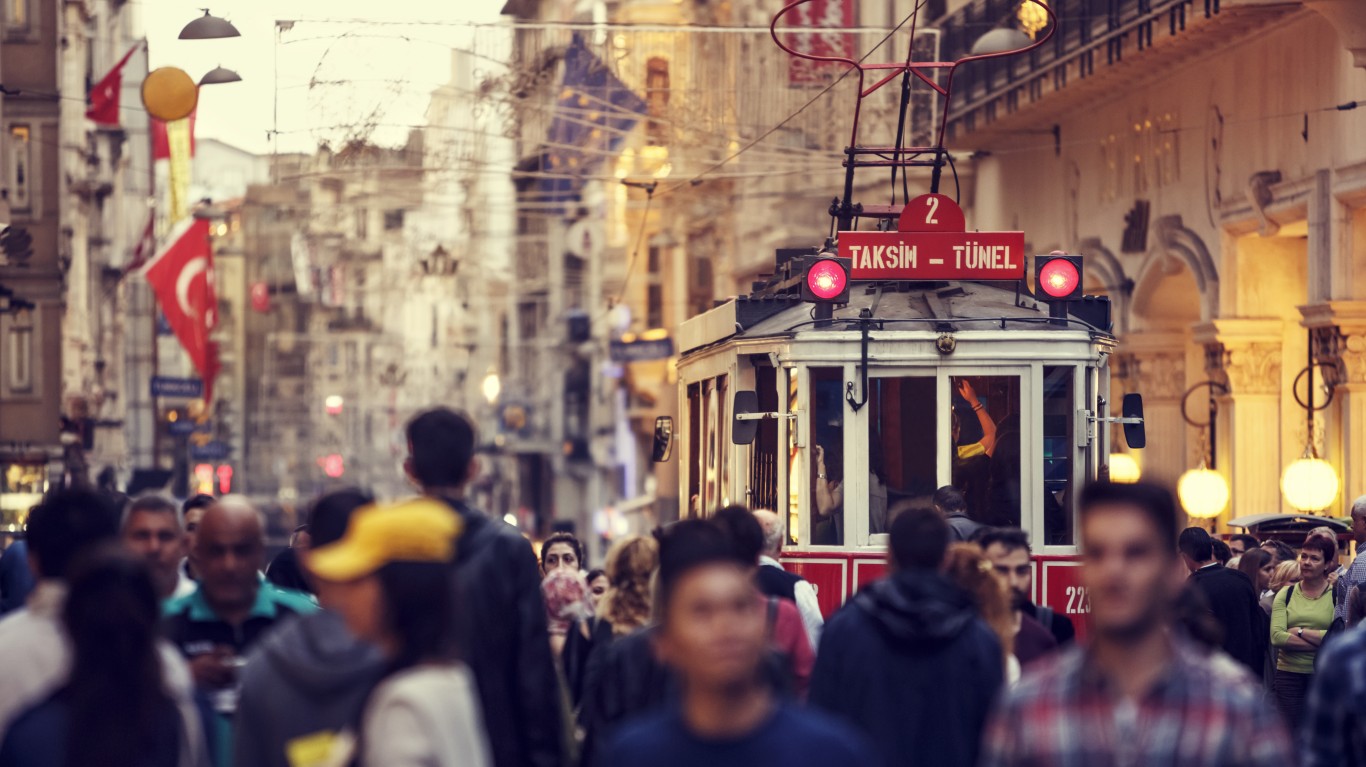
5. Istanbul, Turkey
> Avg. hours worked per week: 45
> Avg. one-way commute time: minutes 53
> Population with mental health disorder: 14.4% (women), 14.2% (men)
> Gallup world poll happiness ranking: 115 out of 186
> Population: 14.5 million
Commuting to work in Istanbul, Turkey’s most populous city, is a daily stress factor — the average one-way commute is 53 minutes, the 13th longest of any of the 560-plus cities reviewed for the list. A long work week, the sixth longest of any of the 190 cities reviewed, at 45 hours, also adds to stress.
A failed coup against President Recep Tayyip Erdogan in 2016 led to a national state of emergency that was not lifted until two years later. That did little to ease tension. Critics of the regime were jailed arbitrarily and for long periods on charges of terrorism, and the government cracked down on human rights defenders.
There is also tension caused by the large influx of Syrian refugees flooding into Turkey to escape the civil war in Syria. Many are competing for jobs in a nation where unemployment is nearing 14%.
[in-text-ad]
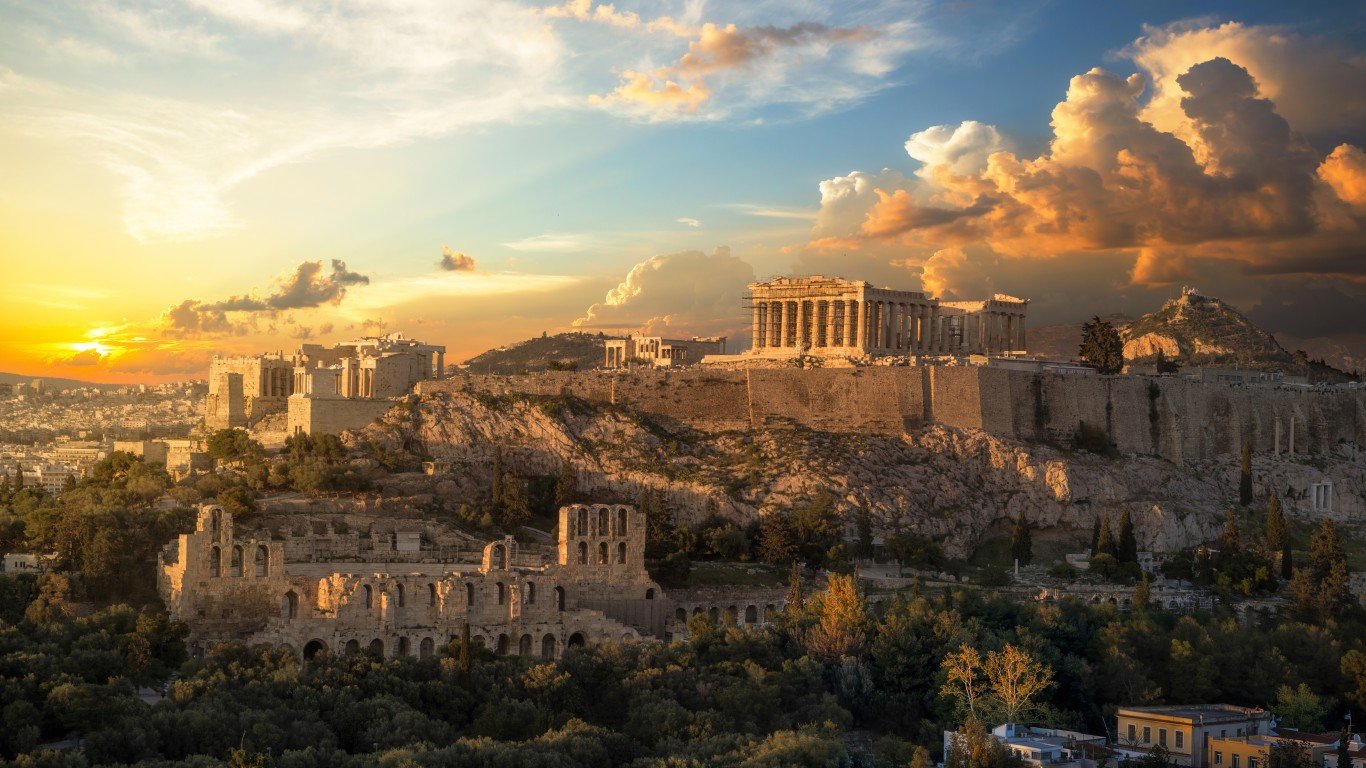
4. Athens, Greece
> Avg. hours worked per week: 40
> Avg. one-way commute time: minutes 38
> Population with mental health disorder: 16.9% (women), 14.0% (men)
> Gallup world poll happiness ranking: 121 out of 186
> Population: 3.2 million
Greece’s financial crisis led to a succession of bailouts beginning in 2010 by the European Union and the International Monetary Fund. The nation’s economy shrank by 9.1% the following year.
While the economy gradually improved, job prospects have not. The nation’s jobless rate of 17.3% is the second-highest of any European country on the list. Many young people in Greece, among them doctors and engineers, are pessimistic about their job futures and have emigrated to other countries. For those who are working, they are putting in 40 hours a week, the 22nd most of any of the 190 cities reviewed for the list. Living with prolonged stress because of the financial crisis in Athens has prompted entrepreneurs to create “rage rooms” in which Athenians take out their stress by smashing televisions, keyboards, plates and other objects with a bat.
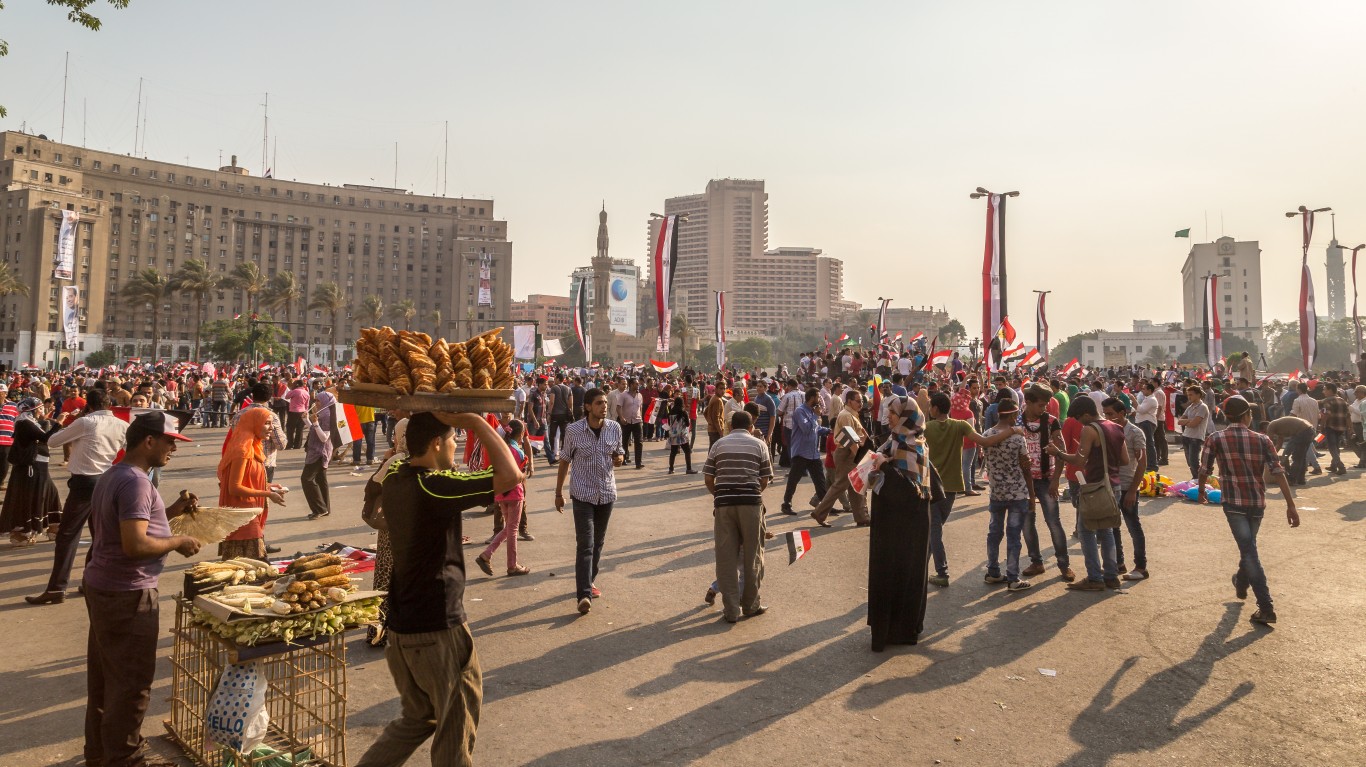
3. Cairo, Egypt
> Avg. hours worked per week: 36
> Avg. one-way commute time: minutes 51
> Population with mental health disorder: 14.9% (women), 14.3% (men)
> Gallup world poll happiness ranking: 177 out of 186
> Population: 20.9 million
Cairo, Egypt, one of the oldest cities in the world, is the ninth unhappiest city in the world out of 186 cities polled by Gallup. However, traffic is a stressful fact of life, with the average one-way commute time to work at 51 minutes, one of 23 cities on the list with a travel time of more than 50 minutes.
Political instability and acts of terrorism in recent years have also been contributing stress factors.
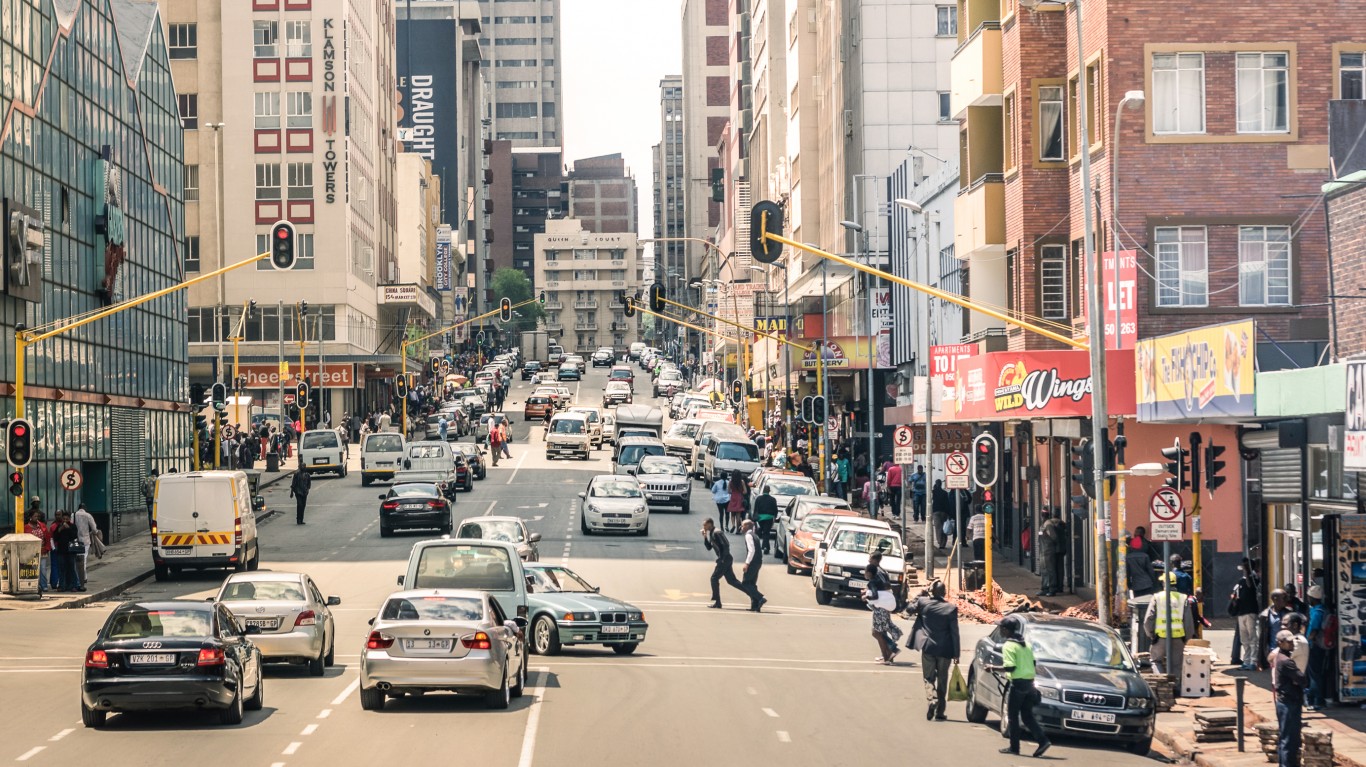
2. Johannesburg, South Africa
> Avg. hours worked per week: 43
> Avg. one-way commute time: minutes 41
> Population with mental health disorder: 12.7% (women), 12.8% (men)
> Gallup world poll happiness ranking: 120 out of 186
> Population: 5.8 million
People in Johannesburg, South Africa, work more than 43 hours a week, the 13-highest total on this list of 190 cities reviewed. Nationally, South Africa has a jobless rate of 28.5%, the highest of any country with a city considered for this list. Crime is front of mind for residents of Johannesburg and other cities in South Africa, and although the crime rate has declined, it remains a source of concern as the nation adapts to the post-apartheid reality.
[in-text-ad-2]
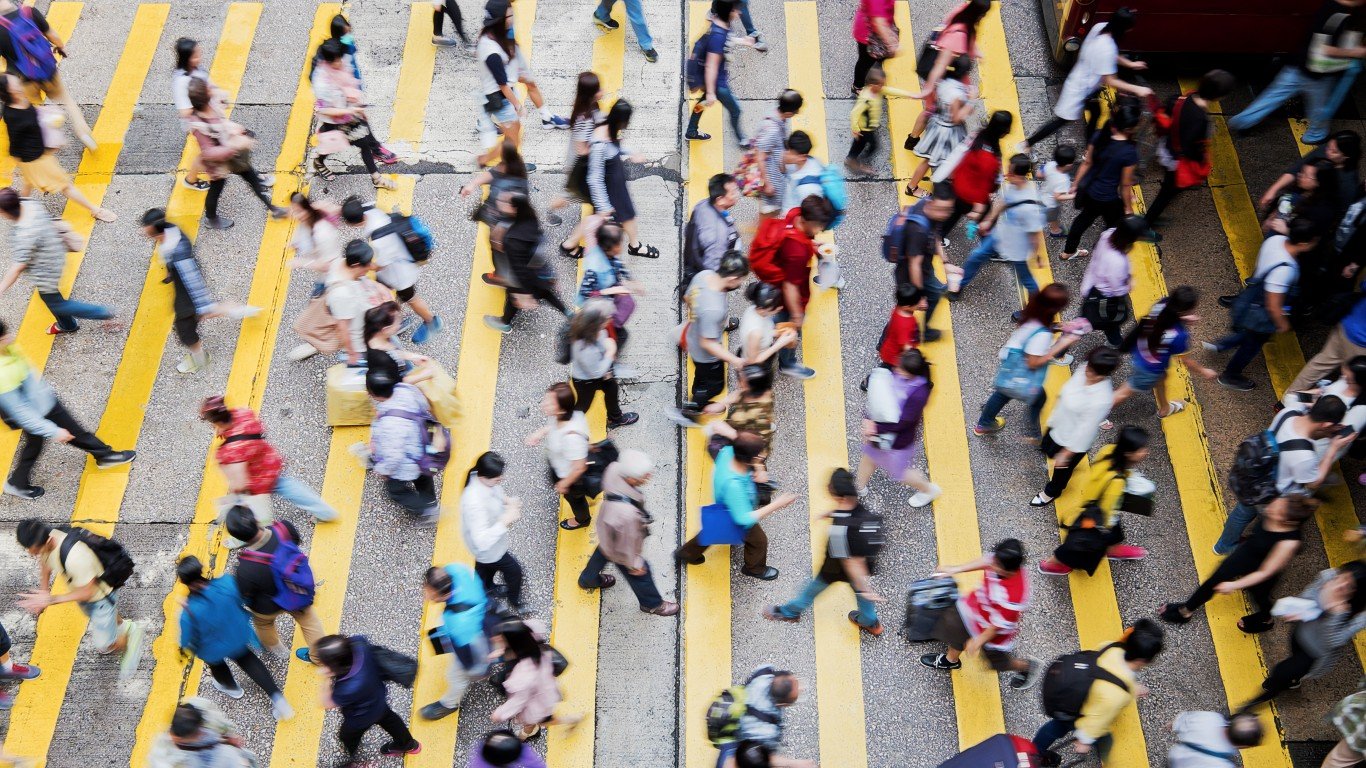
1. Hong Kong, Hong Kong
> Avg. hours worked per week: 42
> Avg. one-way commute time: minutes 42
> Population with mental health disorder: N/A
> Gallup world poll happiness ranking: 114 out of 186
> Population: 7.5 million
Hong Kong, the tiny economic powerhouse that the British handed back to China in 1997, ranks as the most stressed-out city largely because it is not affordable for many residents. The cost of housing is about 20 times higher than the city’s median household income.
Hong Kong was returned to China in 1997 by the British with the provision that it be supervised as a special administrative region, with some autonomy, and be allowed economic and press freedoms not permitted in communist China. Gradually, mainland China has been exerting pressure on Hong Kong, curtailing press freedoms and hindering the rights of people to gather in public areas. This has led to demonstrations that have turned violent, and the events have hurt the economy, which tumbled into recession in the third quarter of 2019, its first recession in a decade. Hong Kong also suffered the shock of the COVID-19 pandemic, which originated in Wuhan, China.
To identify the most stressed out cities in the world, 24/7 Wall St. created an index of eight city- and country-level measures of health, financial well-being, and happiness, among other indicators of stress. These were then normalized using min-max normalization and assigned a score between 0 and 1, then averaged to get a composite score for each city.
City-level Index measures include: Average one-way commute to work is from the Current Traffic Index for 2020 published by Numbeo, a crowd-sourced global database. Housing Affordability was measured using the median multiple (median house price divided by median household income), which is from the 16th Annual Demographia International Housing Affordability Survey for 2020 published by the Frontier Centre for Public Policy. Hours worked per year is from Union Bank of Switzerland (UBS) Global Cities Ranking for 2018, the most recent year available. Finally, a city quality of life measure came from the 2020 World Happiness Report’s Current Life Evaluation.
Country-level Index measures include: Poverty rate and unemployment by country are from the World Bank World Development Indicators database, and all data is for the most recent year available. Mental health and substance abuse by country is from Our World in Data, a scientific online publication, for the year 2017, the most recent year available.
All other supplemental data: Vacation days per year was also from UBS Global Cities data for 2018. Total population, suicide mortality, and life expectancy for each country are from the World Bank World Development Indicators, each for the most recent year available. Alcohol consumption by country is from “Our World in Data” for the year 2016, the most recent year available. Lastly, homicide and rape rates by country are from the World Population Review for the year 2020.
Take This Retirement Quiz To Get Matched With An Advisor Now (Sponsored)
Are you ready for retirement? Planning for retirement can be overwhelming, that’s why it could be a good idea to speak to a fiduciary financial advisor about your goals today.
Start by taking this retirement quiz right here from SmartAsset that will match you with up to 3 financial advisors that serve your area and beyond in 5 minutes. Smart Asset is now matching over 50,000 people a month.
Click here now to get started.
Thank you for reading! Have some feedback for us?
Contact the 24/7 Wall St. editorial team.
 24/7 Wall St.
24/7 Wall St.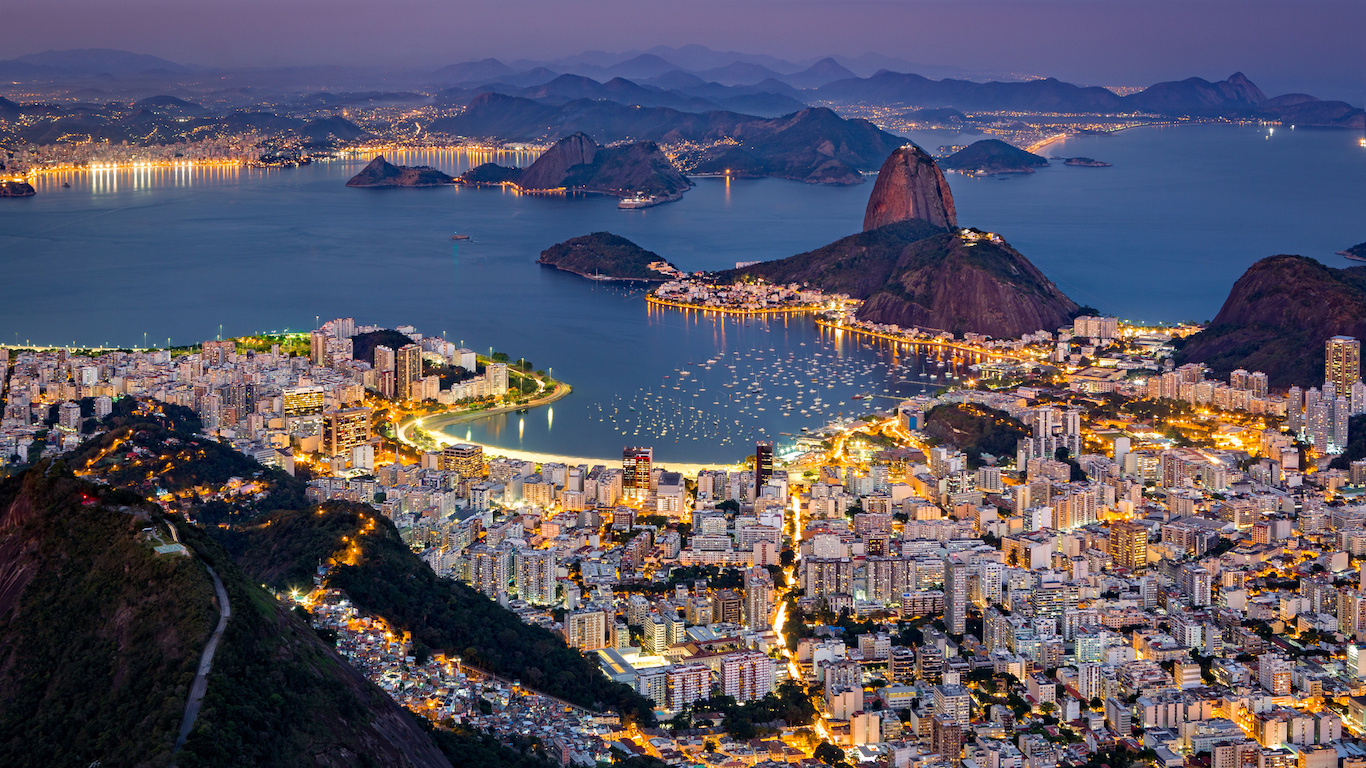 24/7 Wall St.
24/7 Wall St.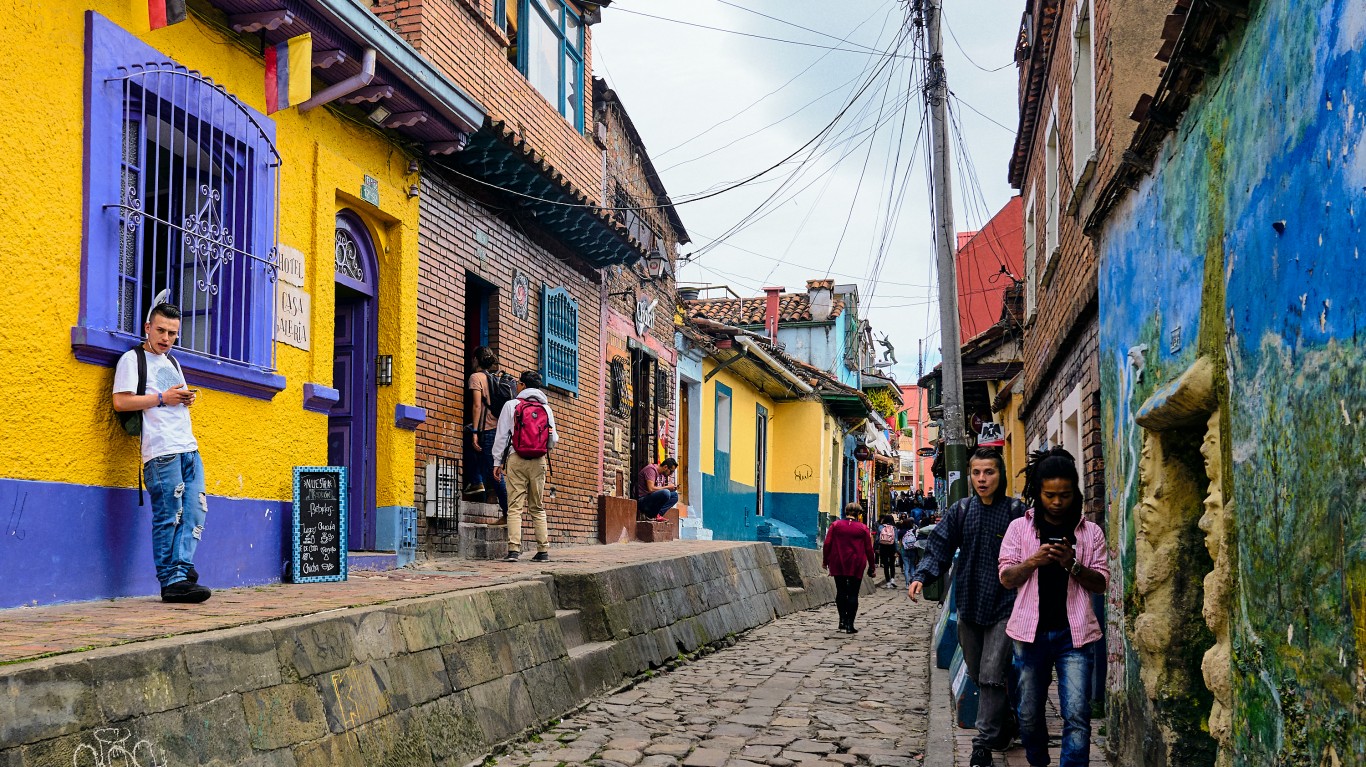
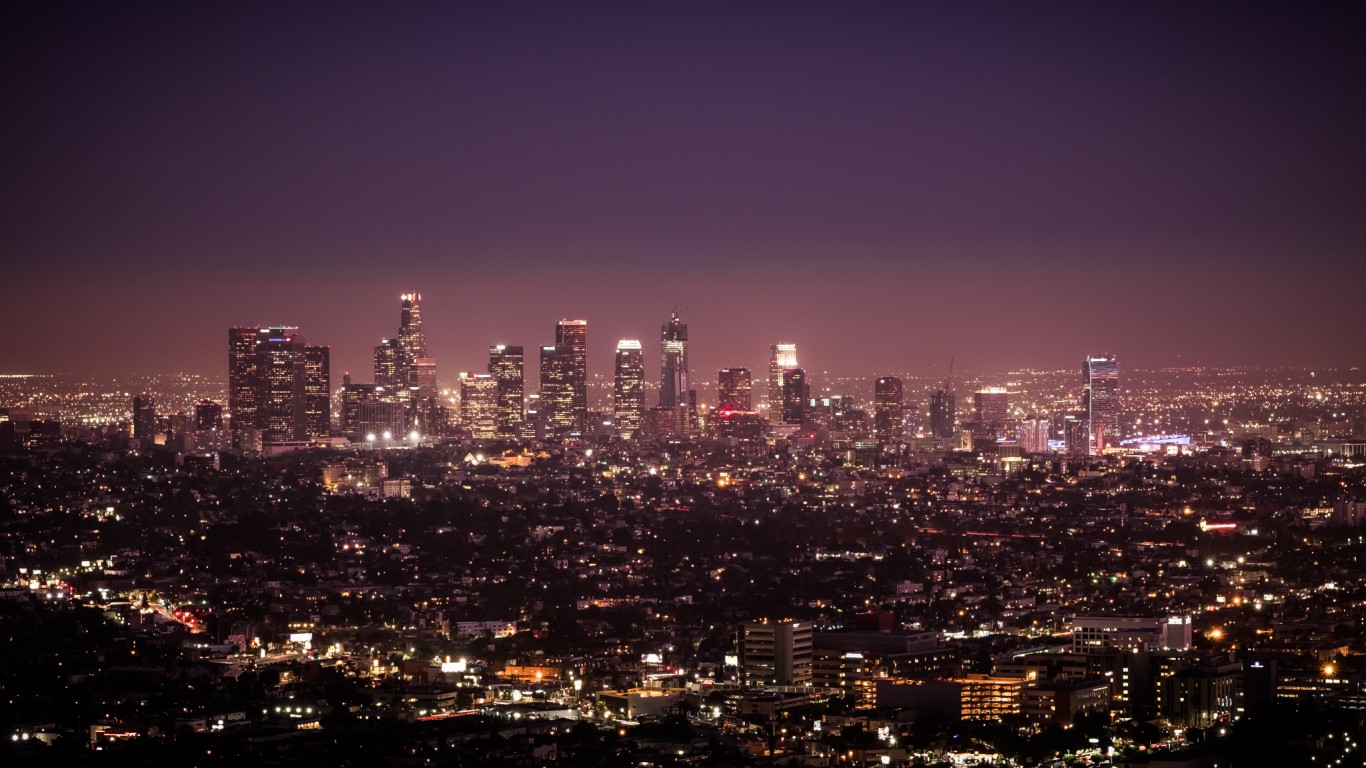
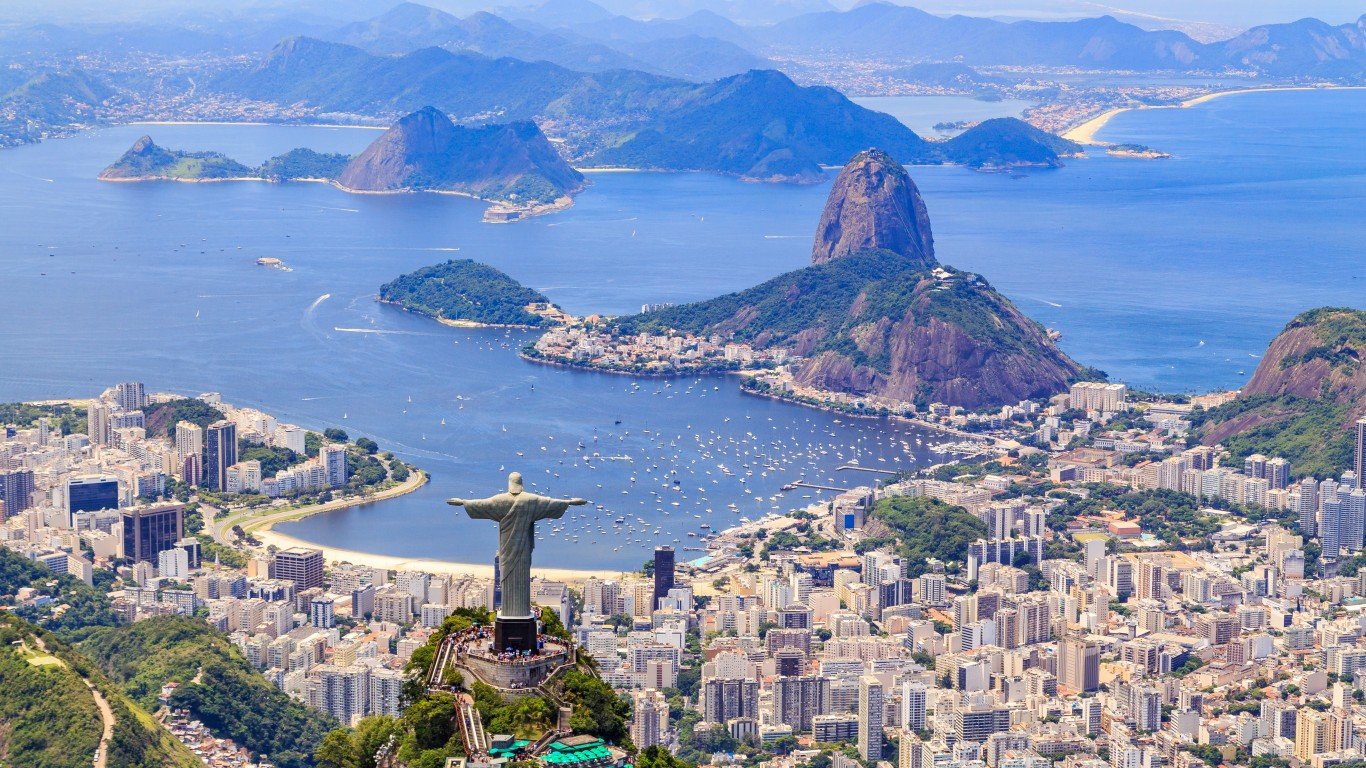 24/7 Wall St.
24/7 Wall St.


